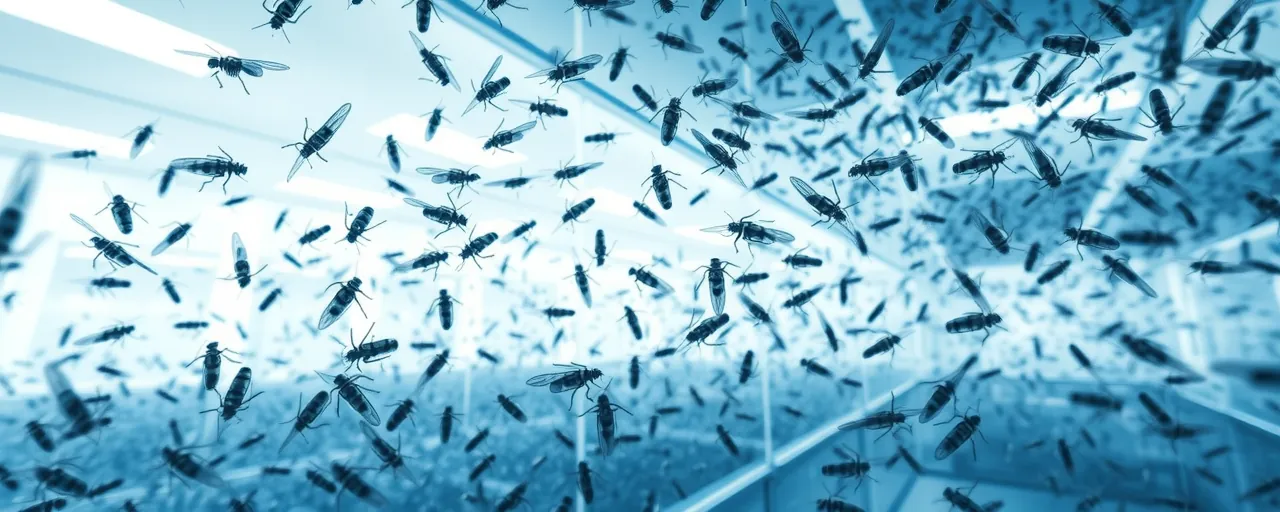A Pest That Could Ravage Our Farms
The New World Screwworm is a ruthless enemy. This parasitic insect burrows into livestock, inflicting agony and wiping out herds. Its alarming spread in southern Mexico puts American agriculture in the crosshairs. If it reaches our soil, farmers face ruin, food prices could soar, and our food supply might falter. Under Secretary Brooke Rollins, the U.S. Department of Agriculture is fighting back with fierce determination.
The numbers tell a grim story. Invasive pests already cost U.S. agriculture $21 billion yearly. Since 1960, North America has lost $1.26 trillion to these threats. The screwworm’s advance isn’t just Mexico’s headache; it’s a direct assault on our economic stability. Our livestock and rural communities are at risk. Can we afford to ignore this danger?
Secretary Rollins has stepped up. Her May 2025 suspension of live animal imports from Mexico was a tough but necessary call, putting American farmers first. The USDA’s $21 million investment to transform a fruit fly facility in Metapa, Mexico, into a screwworm eradication hub shows bold foresight. Soon, it will produce 60 to 100 million sterile flies weekly, driving the pest far from our borders.
This fight isn’t new. Since 1966, the U.S. has used sterile insect techniques to crush screwworm at home and abroad. By staying vigilant, we’ve kept our herds safe. Today’s actions build on that legacy, ensuring our food system remains secure.
American Grit in Action
The sterile insect technique is a brilliant tool. Releasing sterile male screwworms disrupts their reproduction, slashing their numbers. The Panama-based COPEG facility currently deploys 100 million sterile flies weekly across 44 flights. The Metapa upgrade will double this output, fortifying our defenses. This strategy has worked before, eradicating screwworm in Mexico by 1991 and Central America by 2000.
Daily collaboration with Mexico keeps this effort on track. Technical calls, on-site visits, and a 2025 accord waiving customs duties on eradication equipment show practical teamwork. The USDA’s Animal and Plant Health Inspection Service leads with precision, ramping up surveillance and tightening animal movement controls to block the pest’s path.
Some argue we should loosen borders or redirect funds to domestic programs. They see international efforts as a drain or a threat to our autonomy. But pests don’t stop at borders. The $509 billion in global agricultural losses from invasive species since 1970 proves the stakes. Spending now to stop screwworm in Mexico spares us a far bigger bill if it hits our heartland.
Borders as Our First Defense
Securing our borders isn’t just about immigration; it’s about safeguarding our food. Halting imports of cattle, horses, and bison from Mexico was a pragmatic move. With enhanced inspections by Customs and Border Protection and monthly reviews, we’re keeping infected animals out. This protects farmers who can’t afford to lose their livelihoods to a preventable pest.
History supports this approach. The 1972 U.S.-Mexico Screwworm Eradication Program built a lasting barrier. When diseases like foot-and-mouth disease threatened, countries like the UK in 2001 used trade halts to stop outbreaks. Today’s $68.8 billion border security package, boosting barriers and staffing, strengthens our shield. Why gamble with our agricultural backbone?
Others push for global solutions, like the FAO’s One Health framework or the EU’s €8 million SecureFood initiative. They favor AI tools and international treaties, claiming shared responsibility benefits all. But these often sideline American priorities. Our farmers need policies that protect them directly, not ones tangled in global agendas. Our work with Mexico succeeds because it aligns with our interests.
Protecting What Matters Most
The screwworm battle reflects a broader truth: our food security and economic strength demand constant vigilance. The USDA’s plan—sterile flies, strict borders, and relentless monitoring—offers a blueprint for defeating invasive threats. But it requires unwavering resolve to see it through.
Funding the Metapa facility isn’t about helping Mexico; it’s about saving American farms. By stopping screwworm south of the border, we avoid the devastation of culling herds or absorbing soaring costs. The $2.2 trillion in global pest damages since 1960 shows what’s at stake. Secretary Rollins’ strategy keeps us one step ahead.
America thrives when it acts decisively. Let’s keep our borders strong, our farmers prosperous, and our food supply secure. The screwworm won’t pause, and neither can we.
